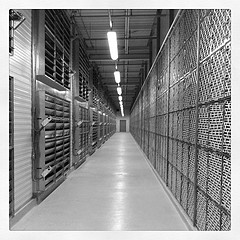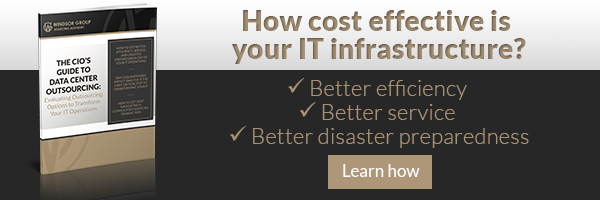 “Do more with less” is today’s mantra for companies of all sizes. It’s become a fundamental tenet of daily business operations, no longer the theme of some one-time corporate makeover. IT is front-and-center in this new cost-reduction focus, because it’s essential for corporate functionality yet expenses continue to increase. That means IT infrastructure planning has to be a corporate focus as well.
“Do more with less” is today’s mantra for companies of all sizes. It’s become a fundamental tenet of daily business operations, no longer the theme of some one-time corporate makeover. IT is front-and-center in this new cost-reduction focus, because it’s essential for corporate functionality yet expenses continue to increase. That means IT infrastructure planning has to be a corporate focus as well.
You have to assess your IT situation so you can identify and implement efficiencies that will help you reduce costs and boost productivity and profitability. Then you need to repeat that improvement process. And keep repeating it.
You can’t allow yourself to become complacent, because about the time you believe you are “as efficient as possible,” you’ll find two things have happened:
- Technology and processes have continued to evolve, and
- Your competition is busy adopting those latest cutting-edge innovations.
Standing still is tantamount to falling behind.
IT infrastructure planning ensures you’re never standing still. Just as you would on the production line or elsewhere throughout your enterprise, you’re engaging in a process of continuous improvement. Reducing costs and streamlining processes. Then taking another look and doing it again.
Strategic, timely planning helps you eliminate waste – time as well as money. Knowing how well your IT operations are working and what you will need as the future unfolds helps you avoid doing and spending unnecessarily. You’re better focused, and that makes you more productive and able to make better decisions. You’re able to save more money, and you’re able to make more, too.
Cost reduction analysis can be boring and tedious, but it’s worth it.
Smart IT infrastructure planning can not only help you reduce operating and capital costs, it can help improve your cash flow. And it makes sense to schedule IT infrastructure planning as a regular review process, because nothing about your enterprise or your marketplace is static.
Your assessment will identify strengths and weaknesses, pointing up opportunities to eliminate equipment or tasks or gain efficiencies and savings via outsourcing. It will uncover problems that can be fixed or tweaked. Your assessment will help you discern which benchmarks to use for future analysis, to keep daily operations aligned with long-term goals. Metrics should apply to costs and also performance factors.
To most effectively use IT infrastructure planning to reduce costs, you’ll want to look at every detail. That includes the obvious – direct costs of equipment, applications and people – but indirect costs, too. That includes everything from facilities management and other overhead expenses to labor benefits, hiring, etc. as well as non-IT administrative costs, insurance, depreciation and so on.
You want to clearly understand your true total cost of ownership, because every dollar can have exponential value on your the bottom line. And looking in a “microscopic” way at the complete picture helps avoid mistakes such as slashing when you should merely trim or becoming distracted by non-core functions.
Increased productivity is about more than dollars.
IT infrastructure planning can help you save on technology systems and processes. But it’s equally valuable when it comes to helping you assess and modify behaviors that can streamline work flow. It’s not just about what you’re doing but how you’re doing it. And we all know that time is money.
Effective planning enables you to take advantage of the newest innovations and best practices. You can free up staff time to devote to revenue-generating activities. You can put in place stronger governance policies and procedures that ensure consistently tight data security.
And you’re assured disaster recovery is there if you need it. Problems don’t have to come in the form of a full-on disaster to cause costly disruption and frustration. So mitigating even small risks keeps your people on task and your business on course and on schedule.
Reducing costs is just the beginning. IT infrastructure planning lays the foundation for better day-to-day overall resource management.
Photo credit: Robert Scoble


